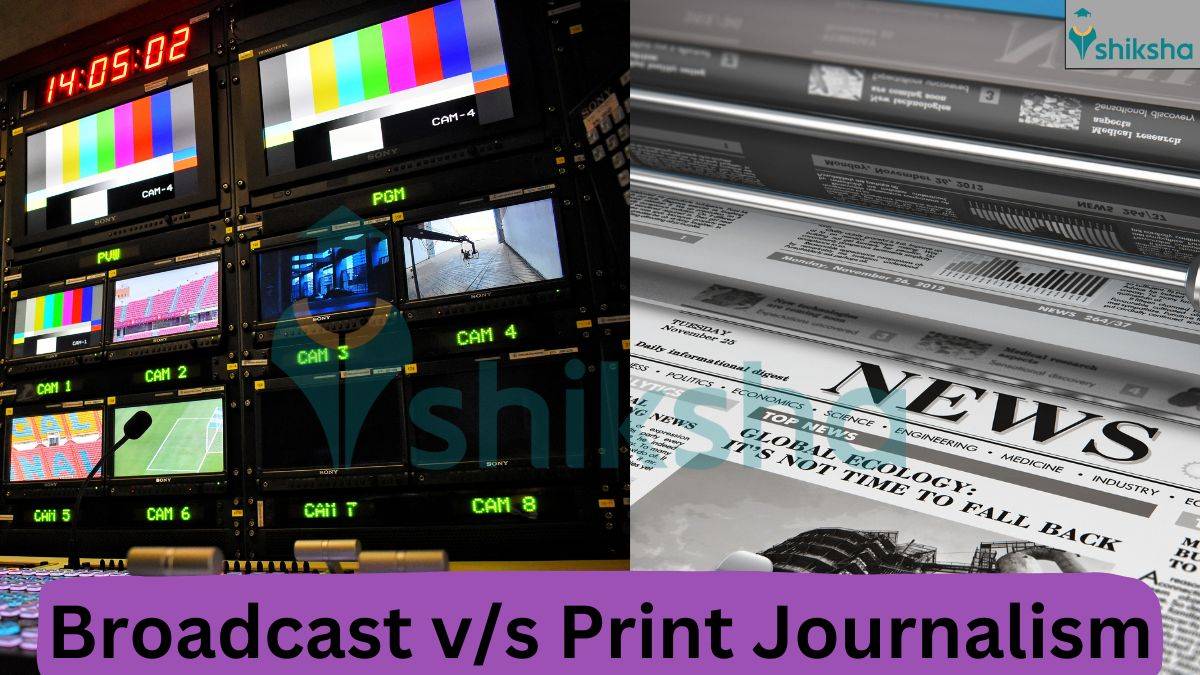Difference between Broadcast and Print Journalism
Broadcast and Print Journalism are two major forms of news publishing. Check this article for difference between broadcast and print journalism.
Broadcast and Print Journalism are forms of mass communication. Broadcast journalism gives instant news through television, radio and online streaming. Print journalism gives information through newspapers, magazines, etc. It offers in depth analysis and detailed reporting. Both broadcast and print journalism play an important role in shaping public opinion and giving latest news. Although the motive of both types of journalism is to give information to public, they demand different skills and have different challenges.
Check article to know differences between broadcast and print journalism.
- What is Broadcast Journalism?
- Features of Broadcast Journalism
- What is Print Journalism?
- Features of Print Journalism
- Difference between Broadcast and Print Journalism
What is Broadcast Journalism?
Broadcast journalism is a form of journalism. It gives news and information through television, radio and digital platforms. Broadcast journalism focuses on real time reporting. It uses audio and visuals to interact with audience. This type of journalism includes breaking news, interviews, documentaries and live coverage. Broadcast journalism offers news quickly.
Features of Broadcast Journalism
Following are some features of Broadcast Journalism.
- Broadcast Journalism uses sound and visuals to communicate news effectively.
- It gives live updates on current events to public.
- Through broadcast journalism, news can be presented in a short format.
- Broadcast Journalism gives news to a larger audience. It can reach different regions at same time.
- Broadcasting news needs advanced technology and high technology equipment like cameras, microphones, and editing software.
Also Read: Difference Between Mass Media And Mass Communication
What is Print Journalism?
Print journalism refers to reporting, writing and publishing news in printed formats. The formats include newspapers, magazines and journals. Print journalism focuses on detailed analysis, investigative reporting and storytelling. It offers deep information of current events, politics, business, etc.
Features of Print Journalism
Following are features of Print Journalism.
- Print Journalism offers well researched news.
- Print Journalism offers verified and fact checked news.
- It follows a clear writing style.
- Print Journalism can be stored for future.
- The content/news presented through print journalism is available to readers in urban and rural areas.
Difference between Broadcast and Print Journalism
Broadcast Journalism is different from Print Journalism in following ways.
| Basis of Difference |
Broadcast Journalism |
Print Journalism |
|---|---|---|
| Meaning |
It is process of giving news and information through TV, radio, and digital streaming platforms. |
It is a practice of gathering, writing, and publishing news in printed formats like newspapers and magazines. |
| Medium |
Broadcast Journalism uses TV, radio, and online videos. |
Print Journalism uses magazines, newspapers, and journals. |
| Speed |
Broadcast Journalism gives real time news and updates. |
Print Journalism gives late information as writing, editing, publishing, and distribution take time. |
| Presentation |
The presentation of news relies on audio visual elements. |
The news or update is primarily based on text and images. |
| Interactivity |
Broadcast Journalism uses visuals and sound which makes it highly interactive. |
Written content has a limited scope of interaction. |
| Production Cost |
The production cost is high due to equipment and studio costs. |
The cost of production is lower than broadcast journalism, as it mainly includes writing and printing. |
Read More:


Nupur Jain started with a passion for educational content writing, which soon grew into a meaningful journey of helping students through reliable guidance. A commerce graduate from Delhi University, she has spent ov
Read Full Bio